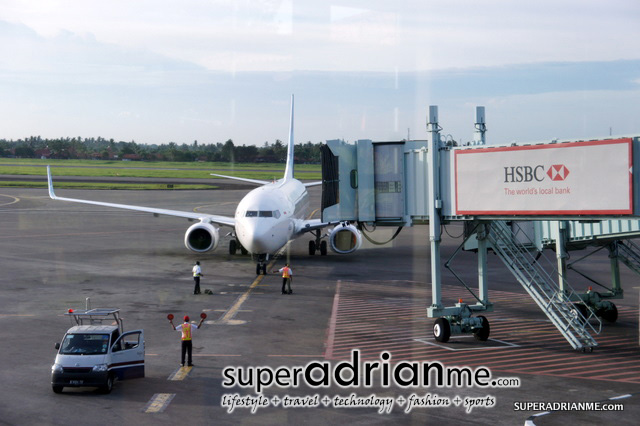22 September 2011, Jakarta – The International Air Transport Association (IATA) has called on Indonesia to implement coordinated policy measures to reap the economic and social benefits of a successful aviation industry.
“I am optimistic about Indonesia’s aviation potential. With over 18,000 islands crossing an expanse of over 5,000 km, aviation is the critical link. Only aviation can connect efficiently Indonesia’s nearly 240 million inhabitants domestically and to the world. So it is important that the government has coordinated policy measures, including the critical issues of ensuring safety and adequate infrastructure for development,” said Tony Tyler, IATA’s Director General and CEO.
Between 2010 and 2014, Indonesia is expected to be the sixth fastest growing market for international passengers. In 2014, Indonesia will rank as the ninth largest domestic market and among the top 10 for international freight. “The potential for aviation in Indonesia is enormous. Alongside its significant domestic traffic, its location at the heart of southeast Asia gives this market tremendous potential. As the Association of Southeast Asian Nations (ASEAN) moves forward with liberalization, it is important that Indonesia is well-prepared with a safe industry operating on global standard infrastructure,” said Tyler.
Addressing issues in Indonesia is a priority for Tyler during his first visit to Asia as IATA’s DG and CEO. While in Jakarta, Tyler met with Garuda Indonesia CEO Emirsyah Satar, and will have discussions with Indonesian government officials, including Transport Minister Freddy Numberi, and airport operator Angkasa Pura II.
Safety: IATA emphasized the need for attention to safety oversight, particularly as the industry is rapidly developing. Between 2005 and 2010, Indonesia recorded a total of 33 accidents.
“Indonesia is 1.4% of global traffic but accounted for 4% of all accidents in 2010. Every accident is a reminder of the need to improve. Many efforts have been made in recent years to improve Indonesia’s safety record. An indication of the success of these efforts is seen in the removal of five Indonesian carriers from Europe’s list of banned airlines. Now we need a coordinated initiative by all stakeholders to solve the safety issue once and for all and restore confidence in all of Indonesia’s airlines,” said Tyler.
“Safety is our top priority and IATA is here to assist. I urge Indonesia to mandate the IATA Operational Safety Audit (IOSA) for all Indonesian carriers. Similarly, I encourage the mandating of the IATA Safety Audit for Ground Operations (ISAGO) at Indonesian airports to manage better safety on the ground. Together, such proactive actions will send a clear signal to the world that Indonesia is serious about solving its safety issues,” said Tyler.
IOSA is the highest global standard for airline operational safety management. Countries that have mandated IOSA include Brazil, Mexico, Chile, Turkey, Lebanon, and Bahrain. In 2010 there was one hull loss accident for every 1.6 million flights globally, while IATA carriers—for whom IOSA is a condition of membership—had one hull loss accident for every 4 million flights. There are 372 airlines on the IOSA registry and Garuda is the only Indonesian airline on it.
ISAGO is the global standard for ground handling safety. The ISAGO registry includes 125 registrations for 82 ground service providers operating at 98 airports worldwide.
Runway excursions – instances where the aircraft leaves the runway – accounted for 21% of global accidents in 2010. Three of the four accidents in Indonesia in 2010 were runway excursions. As part of IATA’s efforts to improve safety in Indonesia, a Runway Excursion Risk Reduction (RERR) workshop was held in 2010 and attended by representatives from the Directorate General of Civil Aviation and domestic airlines. The RERR toolkit, which gives high-level reference material as well as an in-depth analysis of runway excursion accident data and a compilation of significant risk factors, has also been made available.
Infrastructure: “Having the right infrastructure to accommodate growth is critical – both on the ground and in the air. It also means having the right processes to handle passengers efficiently. Jakarta’s Soekarno-Hatta airport urgently needs additional capacity. Traffic reached 43.7 million passengers in 2010. This already surpasses the 38 million passenger capacity that the airport will have when Terminal 3 eventually becomes fully operational. A solution is urgently needed. Without sufficient capacity in Jakarta, Indonesia risks missing the economic benefits that should accompany ASEAN liberalization in the coming years,” said Tyler.
Insufficient air traffic management is also a potential bottleneck to growth. “IATA is providing technical assistance for more effective use of the airspace in the Jakarta area but full implementation is as yet uncertain. Similarly, the leading edge Automatic Dependent Surveillance – Broadcast (ADS-B) technology that is in place to manage overflight is not being used. Implementation of both these programs is critical to ensuring that the growing traffic volumes to Indonesia are managed safely and efficiently,” said Tyler.
IATA is promoting process improvements that could increase the quality and efficiency of the passenger experience, namely IATA Fast Travel for passenger processing and Checkpoint of the Future for security. IATA Fast Travel gives passengers more control of their travel through self-service options for baggage tagging, travel documents scanning, flight rebooking, boarding and baggage recovery. Checkpoint of the Future is an initiative to modernize and improve security by combining a risk-based approach with technology that will allow passengers to get from curb to gate without stopping, unpacking or intrusive checks. Specifically, Tyler urged Indonesia to join governments that have endorsed the principles for the Checkpoint of the Future.
Related articles
- Garuda Indonesia Adds Singapore – Jakarta Flights (superadrianme.com)







Pingback: ITB Asia Stickman Goes Social for Charity | SUPERADRIANME